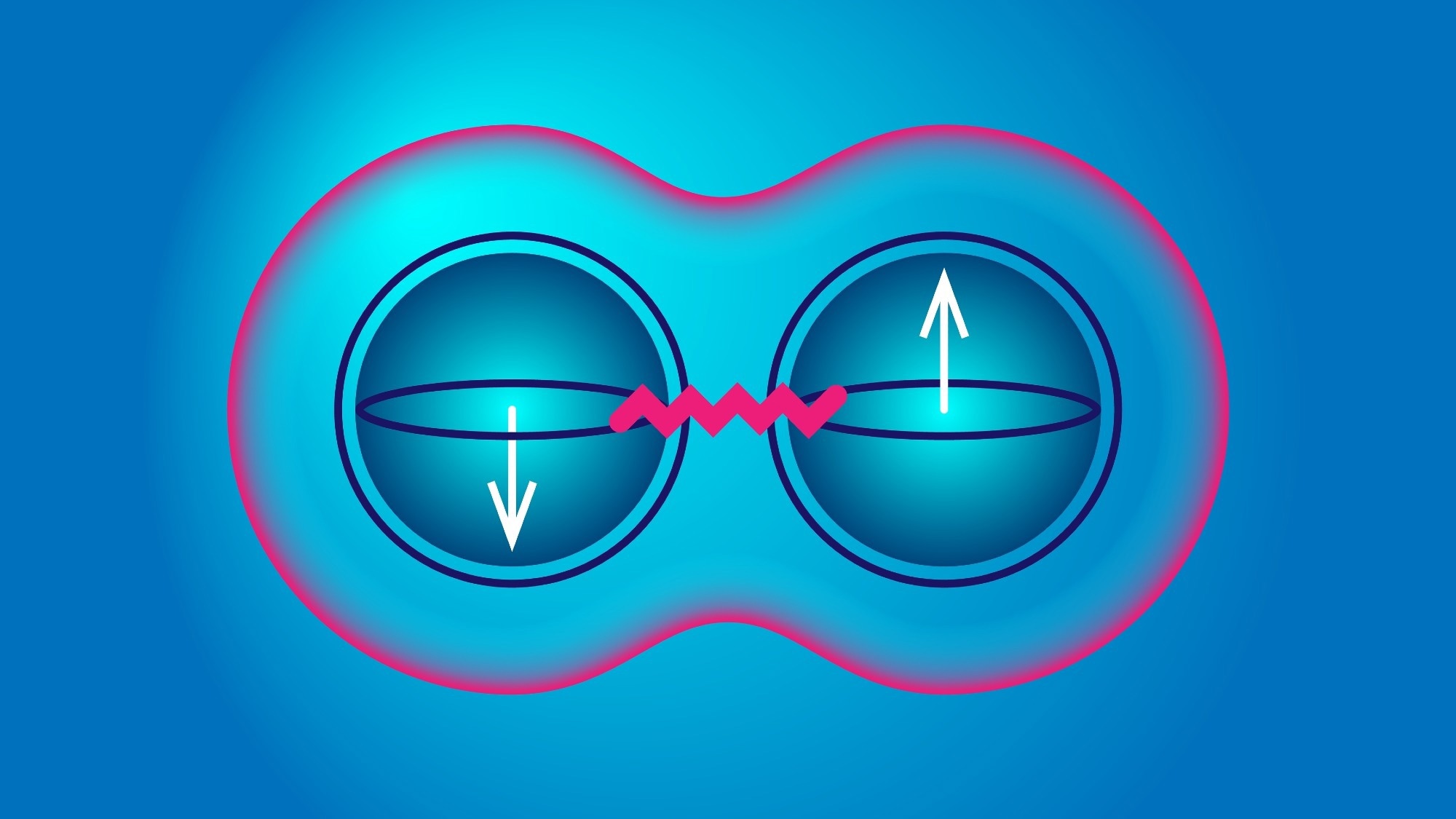Experiments with atom-thin semiconductor flakes and hints at strange “quasiparticles” could point the way to less easily disturbed qubits.

Image Credit: atdigit/Shutterstock.com
New research involving semiconductor materials has the potential to lead to fault-tolerant qubits that could make the quantum computing dream a reality.
Quantum computing is a form of computing that does away with “bits” as the standard unit of information, instead replacing them with “quantum bits” or “qubits.”
The fact that qubits depend on a phenomenon of quantum physics called superposition, which allows a quantum system to be in many states simultaneously, means that whereas a bit can only be in a binary “yes” or “no” state, a qubit can exist in a multitude of states simultaneously.
This gives a tremendous boost to computing power and means that a fully realized quantum computer would massively outstrip even the most sophisticated computer in terms of both computing power and speed.
But, as the fact that fully realized quantum computers don’t yet exist beyond a few examples like Google’s 53-qubit Sycamore processor suggests, there is a major catch with this technology. The phenomenon of superposition that gives qubits their boosted computing power is easily disrupted. To “collapse” a superposition, all it takes is exposure to a magnetic field, a change in temperature, or even an encounter with a stray photon.
As a result, currently, formative quantum computers display impressive computing power, but this quickly breaks down, and it requires them to be kept at super cool temperatures and highly isolated to prevent disruption. Thus, scientists have for some time been engaged in the hunt for a more stable qubit that can hold information for longer without disruption.
That is where a team including scientists from the University of Washington, the University of Hong Kong, the National Institute for Materials Science in Japan, Boston College, and the Massachusetts Institute of Technology comes in. In two papers published in the journals Science¹ and Nature², they document one could be the first steps toward a fault-tolerant qubit.
A Quantum Computing Honeycomb
While experimenting with flakes of semiconductors —materials that have conductivity somewhere between regular conductors like most metals and non-conductors or insulators like ceramics — the scientists and engineers made an important breakthrough.
They found that in the atom-thick flakes that they were working with, there was the signature of fractional quantum anomalous Hall (FQAH) states — an exotic state of matter that exists in two-dimensions materials.
Standard fractional quantum Hall systems require powerful magnetic fields to keep them stable, which makes that impractical for use in quantum computing. FQAHs, on the other hand, can remain stable even at “zero magnetic fields,” the team pointed out in their research.
This exotic phase of matter was achieved by the team constructing an artificial lattice with special properties. The lattice was made from two atom-thick flakes of molybdenum ditelluride that were twisted to create a synthetic “honeycomb lattice” for electrons.
The scientists then cooled this lattice to just a few degrees above absolute zero — the hypothetical coldest temperature possible at which all atomic movement stops. What they then found was that an intrinsic magnetism arose in the system, and this replaced the need for the strong magnetic field needed to keep the fractional quantum Hall state stable.
Quasiparticles are the Key to Stability
The reason the exotic matter state achieved by the team could be a boost for quantum computing is that FQAHs can host strange “quasiparticles” — a particle-like “excitation” that is a collection of quantum characteristics that act collectively in a particle-like way without being independent free-floating structures — called anyons.
It is theorized that certain species of anyons with a fraction of the electric charge of an electron could be used to create a qubit that is protected against small, local disturbances.
The research conducted by the team could help better understand anyons on a deeper level and investigate their properties, which are radically different from those of standard particles like electrons, protons, and neutrons.
In addition to this, the team also hopes that this research could assist in the discovery of even more exotic quasiparticles called “non-Abelian” anyons, which could be “braided” around each other to allow quantum information to “spread out” over the entire system thus protecting quantum computers from being disrupted by local collapses. This system is known as a “topological qubit” that is fundamentally different from standard qubits currently used in quantum computing.
The team's lattice could be a major step towards stable qubits for quantum computers bringing the next generation of computing even closer to the horizon.
More from AZoQuantum: Real-Time Environmental Monitoring With Quantum Sensors
References and Further Reading
Eric Anderson, Feng-Ren Fan, Jiaqi Cai, William Holtzmann, Takashi Taniguchi, Kenji Watanabe, Di Xiao, Wang Yao, Xiaodong Xu., “Programming correlated magnetic states with gate-controlled moiré geometry,” Science, 2023; DOI: 10.1126/science.adg4268
Jiaqi Cai, Eric Anderson, Chong Wang, Xiaowei Zhang, Xiaoyu Liu, William Holtzmann, Yinong Zhang, Fengren Fan, Takashi Taniguchi, Kenji Watanabe, Ying Ran, Ting Cao, Liang Fu, Di Xiao, Wang Yao, Xiaodong Xu., “Signatures of Fractional Quantum Anomalous Hall States in Twisted MoTe2,” Nature, 2023; DOI: 10.1038/s41586–023–06289-w
Disclaimer: The views expressed here are those of the author expressed in their private capacity and do not necessarily represent the views of AZoM.com Limited T/A AZoNetwork the owner and operator of this website. This disclaimer forms part of the Terms and conditions of use of this website.